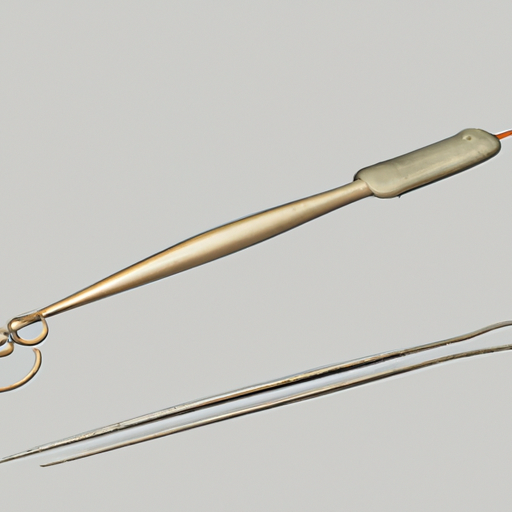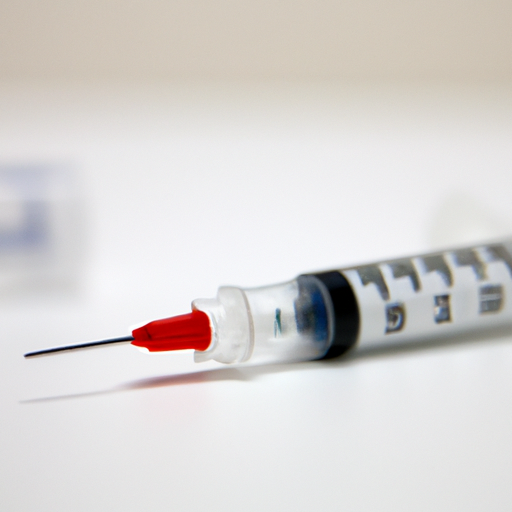This blog post explores the progression of injection devices from traditional needles to the modern, innovative . It delves into the historical background of these medical tools, the technological advancements that led to their evolution, and the impact these innovations have had on patient care and medical procedures.
למידע מורחב בנושא של The Evolution of Injection Devices: From Needles to Needleless Needles ו Needleless Needles כדאי לגשת לאתר injectneedlefree.com
1. 'A Brief History of Needles: Where Did It All Begin?'
The use of needles for medical purposes dates back thousands of years. Ancient civilizations, such as the Egyptians and Greeks, were known to use crude instruments made from materials like bone and metal to puncture the skin for various therapeutic practices. These early needles were far from the sophisticated devices we use today, but they laid the foundation for the development of modern injection devices.
As time progressed, the design and materials of needles evolved. In the 17th century, a major breakthrough came with the invention of the hypodermic needle. This hollow needle, invented by French physician Dominique Jean Larrey, allowed for the direct injection of substances into the body. However, it was not until the 19th century that needles became more widely used in medical settings.
The invention of the syringe in the mid-19th century revolutionized the administration of medications. The combination of a hollow needle and a piston mechanism allowed for precise dosage delivery. This advancement greatly improved the accuracy and efficiency of medical treatments, leading to better patient outcomes.
In the early 20th century, the development of disposable needles further enhanced the safety and convenience of injections. Disposable needles reduce the risk of contamination and infection, as they could be discarded after each use. This innovation played a crucial role in preventing the spread of bloodborne diseases and ensuring the overall well-being of patients and healthcare professionals.

1. An illustration of ancient needle instruments used in medical procedures.
2. 'Transforming the Needle: How Has Technology Changed the Game?'
Over the years, advances in technology have played a significant role in transforming the humble needle into a sophisticated medical device. One notable development is the introduction of safety needles. These needles are designed with features that minimize the risk of accidental needlestick injuries, protecting both healthcare professionals and patients. Safety mechanisms such as retractable needles or needle shields have become standard in many healthcare settings.
Another technological breakthrough is the integration of electronic components into injection devices. Devices with electronic controls allow for precise control over dosage and injection speed, ensuring accurate and consistent administration of medications. These smart devices can also record and transmit data, providing valuable information for healthcare professionals to monitor patient progress and adjust treatments accordingly.
The use of needless needles systems is yet another significant advancement. These devices utilize high-pressure air or gas to deliver medication through the skin, eliminating the need for a needle altogether. needless needless not only reduce the fear and discomfort associated with needles but also minimize the risk of needle-related complications such as infections or tissue damage.
In recent years, researchers have been exploring the potential of microneedles, which are tiny, painless needles that can be used for drug delivery or diagnostics. Microneedles are typically made from biocompatible materials and can be applied to the skin like a patch. They have the potential to revolutionize the way medications are administered, particularly for individuals with a fear of needles.
Advancements in needle technology have not only improved patient comfort and safety but also enhanced the efficiency of medical procedures. As technology continues to advance, we can expect further innovations in needle design and functionality, ultimately improving healthcare outcomes for patients worldwide.
3. ': A Leap into the Future or Simply a New Trend?'
The emergence of needleless injection systems has sparked both excitement and debate within the medical community. These innovative devices offer an alternative to traditional needles, promising a pain-free and convenient experience for patients. However, some skeptics question whether are truly a leap into the future or simply a new trend that may fade away.
One of the key advantages of needleless injection systems is the elimination of needle phobia and the associated pain and anxiety. This is particularly beneficial for pediatric patients and individuals with a fear of needles, as it can alleviate the stress and discomfort often associated with injections. Additionally, needleless systems can be easier to use, reducing the reliance on trained healthcare professionals for administration.
However, there are considerations to be made regarding the effectiveness and safety of needleless devices. Some argue that the technology may not be suitable for all types of medications or treatments, as the precise delivery and absorption of the medication can vary. Additionally, there is a concern about the potential for contamination or infection if the device is not properly sterilized or maintained.
Despite these concerns, needleless injection systems have gained popularity in certain medical fields, such as insulin delivery for diabetes management. These devices offer a more discreet and convenient method for self-administration, allowing individuals to maintain their daily routines without the need for traditional needles.

3. An image of a needleless injection device, emphasizing its unique design and functionality.
4. 'What Does the Future Hold for Injection Devices? Are We Moving Towards a Needleless Era?'
The future of injection devices holds great promise, with the potential for advancements that could revolutionize the way we administer medications and treatments. While needleless injection systems have gained traction in certain areas, it is uncertain whether we are truly moving towards a completely needleless era.
One possibility for the future is the development of more sophisticated needleless technologies that can effectively deliver a wide range of medications with precision and accuracy. This could include advancements in jet injectors, which use high-pressure streams of medication to penetrate the skin without the need for a needle. Additionally, researchers are exploring the use of microneedles and transdermal patches to deliver medications through the skin, eliminating the need for traditional injections altogether.
However, it is important to consider the practicality and feasibility of widespread adoption of needleless needles devices. Factors such as cost, accessibility, and regulatory approval can significantly impact the implementation of these technologies on a large scale. Furthermore, the preference of healthcare providers and patients must also be taken into account, as some individuals may still prefer the familiar and proven method of needle injections.
While needleless injection systems offer many advantages, it is unlikely that traditional needles will be completely phased out in the near future. Instead, we may see a coexistence of both needleless and needle-based devices, with the choice of the administration method being determined by factors such as the type of medication, patient preference, and healthcare provider expertise.
Evolution of Injection Devices:
| Type | Date Introduced | Advantages | Disadvantages |
|---|---|---|---|
| Needles | 1853 | Painless, easy to use | Risk of infection |
| Jet Injectors | 1960s | Painless, hygienic | High cost, loud noise |
| Autoinjectors | 1980s | Hygienic, discreet | High cost, potential for misuse |
| Needleless Injectors | 2000s | Painless, hygienic, discreet | High cost, potential for misuse |
The evolution of injection devices from needles to represents a significant leap in medical technology. This progress not only improves patient comfort and safety but also paves the way for further advancements in drug delivery systems. As technology continues to evolve, we can anticipate a future where injections become entirely painless and non-invasive.
